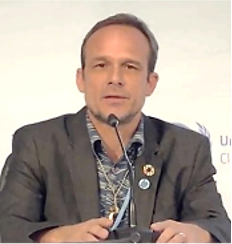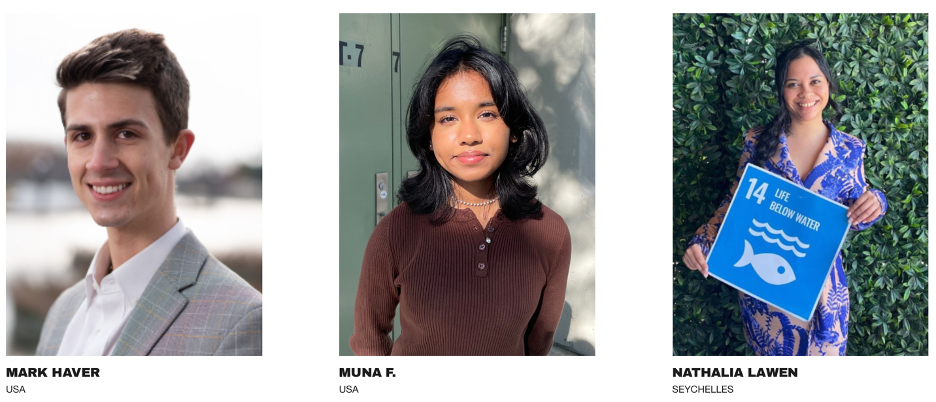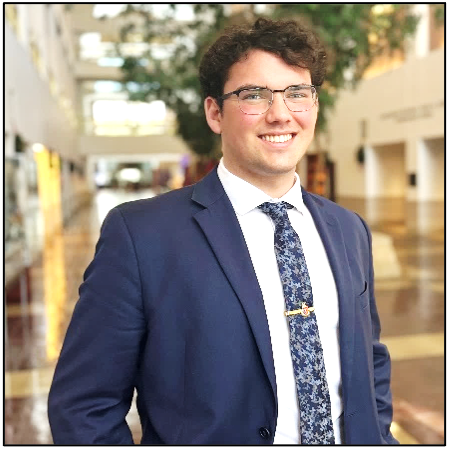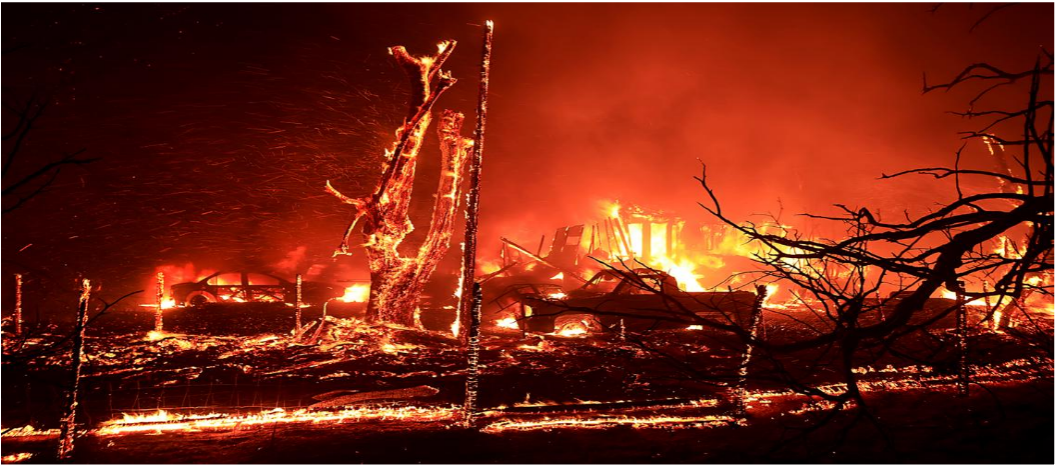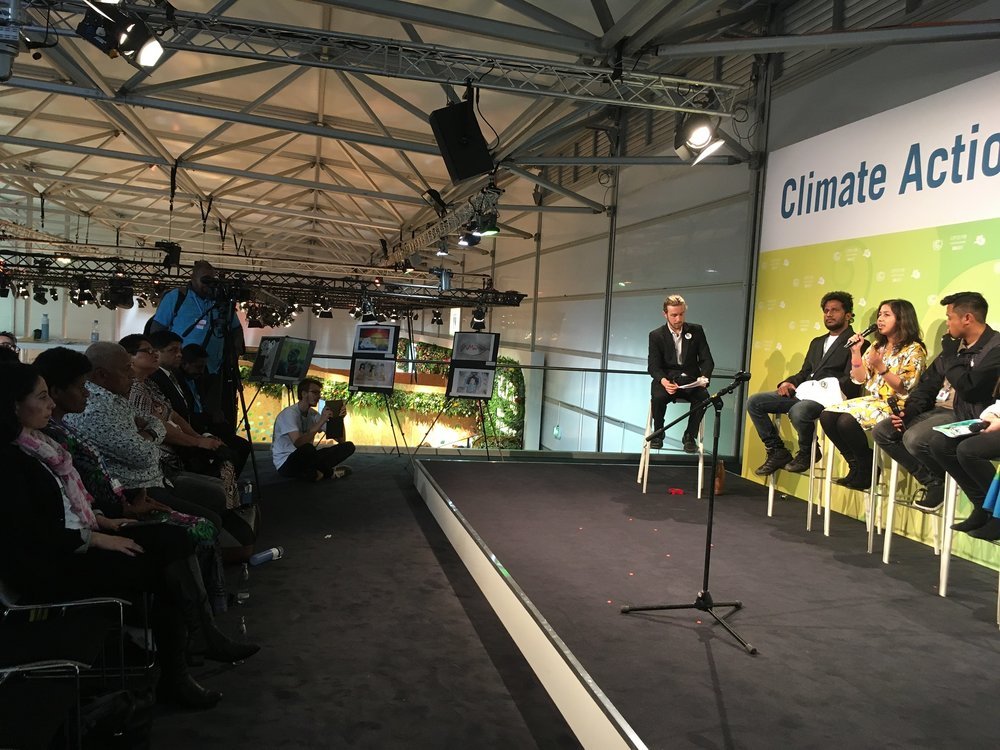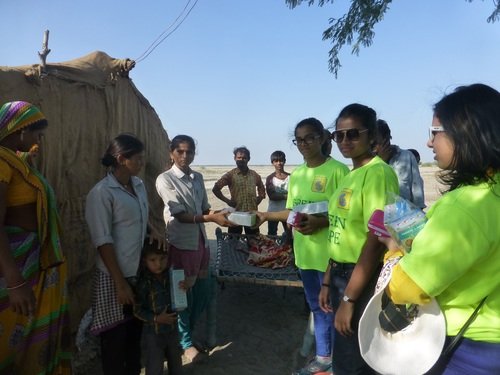
Our Sustainable Times
Island Power!!!
By Francois Rogers, Executive Director of Blue Planet Alliance. He is passionate about the environment and has been Executive Director of Blue Planet Alliance (BPA) since its inception in 2020. BPA is working to end the use of carbon-based fuel. Francois was born in New York City to a Dutch-Indonesian family and was raised and educated in Japan and the Philippines.
Blue Planet Alliance (BPA), founded by climate change visionary Henk Rogers in 2020, is crucial in helping island nations transition to 100% renewable energy by 2045. Henk lived in Hawaii when he led the movement to help Hawaii become the first U.S. state to legislatively mandate a transition to 100% renewable energy. After Hawaii passed this landmark legislation, more than 20 U.S. states followed suit with their own versions of the goal. And that is just the beginning. Every island should be going 100% renewable. Now, BPA is helping other countries and territories attempt to replicate the success of the Hawaii model. BPA is starting with islands because island nations and regions are the most vulnerable to — and the least responsible for — the negative impacts of climate change, such as rising sea levels and extreme weather events. By promoting a shift to renewable energy, BPA is helping these countries reduce their carbon footprint and build resilience against climate-related threats. BPA initiated a Fellowship Program in 2023, which brings 10 islands at a time to Hawaii for a rigorous, week-long workshop that shows these islands how Hawaii achieved this success — and puts them on a path to a more economic, safer, and energy-independent future.
The Fellowship invites each attending island to send four representatives: one from the legislature, one from the regulatory agency, one from the utility, and one from civil society. We take that approach because this has to be an adaptation by the island as a whole: not as a top-down approach, and not as something that outsiders like us convince them to do. It has to be something that each island wants to do. And there are at least three reasons why they should want to, which we call the Three Es:
* Economics
Like many other island jurisdictions, Hawaii overspent $6 billion annually on fossil fuels. That was $5 billion on oil and another $1 billion on coal—every year. The state will save billions of dollars by switching to renewable energy — wind, solar, geothermal, biomass, hydro. And, whatever money it spends will further stay in the Hawaiian economy. The utilities were the biggest obstacle to the achievement in Hawaii — as they continue to be elsewhere. However, once the proposed bill was signed into law and the utilities were forced to do further research, they realized they would make more money with renewables than fossil fuels. Now, the utilities are one of the biggest backers of renewables!
* Energy Independence:
Using renewable energy, rather than imported fossil fuels, islands can be energy Independent. This is more important than it sounds: Energy-independent jurisdictions do not have to fear bad actors or rogue states, who may charge exorbitant prices for their fossil fuel commodities — or refuse to sell them. Nor do energy-independent jurisdictions have to worry about external factors impeding the delivery of oil shipments — factors like extreme weather, a conflict or war, a pandemic that disrupts supply chains, or a polycrisis that involves all of the above.
* Existential
Under the old system, Hawaii and other islands actively contributed to their potential demise. Using fossil fuels was an incremental contributor to a warming planet, melting ice caps, rising sea levels, and extreme weather like once-in-a-generation cyclones or hurricanes, which threaten islands. BPA also works with governments, businesses, and individuals to create a global movement to reduce negative impacts on the planet. This collaborative strategy helps to align human behavior more harmoniously with nature, addressing the climate crisis from multiple angles.
We’ve now had 28 islands matriculate through the program, which we conduct twice yearly (every May and October). And 11 of those islands have signed Blue Planet Climate Agreements with us, pledging to go 100% by 2045. Imagine this bloc of islands' power in diplomatic channels once we hit 20, 30, or even 40 islands. This is a game-changing solution. By focusing on island nations and promoting legislative mandates for renewable energy, BPA is helping these countries achieve energy independence and setting a powerful example for the rest of the world in the fight against climate change. A movement we’ll need now more than ever before.
Blue Planet Alliance - Global Ambassadors:
Thriving Student Initiative Support Community
Zachary Digout is an international studies student at the University of Saskatchewan, Canada. Zachary is a student at the University of Saskatchewan, Canada, where he is pursuing a B.A. degree majoring in International Studies with a minor in Political Science and a Global Studies certificate. Zachary is an NGOCSD-NY Honorary Advisor and a member of the NGOCSD-NY Youth Leadership Council.
10/03/24
In 2017, I participated in a unique educational program at my high school in Saskatoon, Canada, that focused on community and personal wellness and the connection between the two. As my final exam project, I proposed creating a community garden that would serve as an interdisciplinary educational tool and provide healthy food for the neighborhood.
With the support of the school faculty, I spent months learning the essential skills needed to run a community garden. This included managing plot distribution, integrating the garden into different subjects, and ensuring its sustainability beyond the school year.
I led the construction of the garden using an existing but unused space at the school. With the help of student and faculty volunteers, we opened the garden to the community, and all the plots were soon rented out to residents.
After a successful pilot summer, the garden was handed over to a local NGO dedicated to ensuring inclusive access to nutritious foods in the community. Six years later, the garden continues to thrive.
Though not groundbreaking, community gardens play a crucial role in sustainable development. They are often overlooked in favor of larger initiatives but have significant functions and contributions to achieving sustainable development goals. I want to highlight three key elements of their impact:
First, community gardens are intergenerational, fostering a sense of inclusivity by bringing people of all ages and backgrounds together to collaborate on a project that benefits everyone involved. Involving students, faculty, community members, and NGOs creates a sense of ownership and accountability, demonstrating the importance of including diverse stakeholders in sustainable development initiatives.
Second, community gardens in an educational context serve multiple functions. They address immediate food security issues while also providing long-term educational opportunities. They can be used to educate students about nutrition, poverty, food production, climate change, and sustainable urbanization, inspiring and preparing future generations to continue these efforts.
Lastly, community gardens help combat hunger by providing a space for families to grow healthy food and for NGOs to grow food for distribution. While a single garden may not solve hunger independently, multiple gardens can support local food banks and NGOs working to combat hunger in the community.
While community gardens may not be the ultimate solution to ending world hunger, initiatives like this increase education, community services, and access to nutritious food. They align with the goals of the NGO Committee on Sustainable Development-NY and the Sustainable Development Goals and should be implemented on a larger scale in the future.
The UN Summit of the Future: Expectations & Aspirations
Daniel Perell on a panel during the May 2024 Nairobi CSO Conference focused on the UN Summit of the Future.
8/18/24
By Daniel Perell, Representative to the United Nations Baha'i International Community & Co-Chair of the Coalition for the UN We Need
September of 2024 will come and go. Many around the world won’t even know what took place in New York. Regardless, the negotiated outcomes from the Summit of the Future - the Pact for the Future and its two annexes, the Global Digital Compact and the Declaration on Future Generations - will become a part of the narrative and legal body of the multilateral system. It is, therefore, our duty as civil society, as UN staff, as Member State delegates, as well-wishers of humanity broadly, to make the most of this moment.
Rewind nearly 80 years to the first months and years of the United Nations. Its potential and promise were on lips and in headlines around the world.
Today, we need to reinvigorate the United Nations system. We need to find the excitement and the vision that characterized the organization at its inception in 1945. Political circumstances may mean that this year is inauspicious - or, alternatively, they likely demonstrate that this Summit is more needed than ever.
We are unlikely to see immediate changes to the international order as a result of this conference. But there is hope - as always - around the follow up to the Summit.
Rio+20, for example, was a success not because of the outcome document itself, but because of the process it launched to ensure the outcomes - later known as the Sustainable Development Goals - benefit the people of the world.
The Baha’i International Community, for which I serve as a representative, has produced a statement which will be launched on the eve of the Action Days preceding the Summit. Called “Embracing Interdependence”, its focus is on the changes the United Nations would see if the reality of our interdependence were expressed in policy. In other words, if our common humanity and lived global solidarity were truly our departure point for policy making.
Similarly, the Coalition for the UN We Need, for which I serve as a co-chair, has produced a “People’s Pact” which corresponds to the Pact for the Future. In it are dozens of recommendations, the result of over a year of consultations at all levels.
These contributions - in addition to the scores of others we are sure to see, the dozens of side events, films, and gatherings that will take place - demonstrate that at the level of both theory and practice, the people of the world are yearning for more effective multilateral institutions. The challenges threatening humanity today demand it. And the collective capacity of the international community today should instill in us a tremendous sense of o
Taking Action to Address Climatic Risk & Disasters
A home burns during the Corral Fire at Bernard and Stearman roads, west of Tracy. California on Saturday, June 1, 2024. Kent Porter/The Press Democrat via AP
8/14/24
By Jane Katz, NGOCSD-NY Executive Board, an Urban Cluster Core Group Member, and the Urban Focal Point to the UN Office of Disaster Risk Reduction Stakeholder Engagement Advisory Group
As we learn about another disaster – a raging wildfire spreading uncontrollably in California with residents running from their burning houses, choking smoke and fleeing dangerous heat -- it is becoming more evident of the increasing impacts of climatic and other disasters intensifying worldwide. Communities, especially those in more urban areas, remain at the forefront of combating a host of newfound challenges. This new reality highlights another record with last year being the hottest documented as the world’s oceans become warmer, glaciers melt, and sea levels rise. The effects of disasters are rapidly overwhelming the ability of cities and communities to cope in every country, and the outcomes are especially harsh and unequal, with developing countries hit the hardest.
Urban climate change risks, vulnerabilities, and impacts are increasing in urban centers of all sizes, economic conditions, and site characteristics. Cities and communities in urban settings, such as coastal cities and those in earthquake prone areas, are particularly vulnerable to the risk of climate-related disasters. Those cities that are home to the poorest people, especially those living in densely populated, informal settlements, are often disproportionately affected as many lack the resources needed to face the impacts of disasters. Globally, resilience is becoming more crucial, and cities need to be better equipped with innovative tools that can help mitigate the worst impacts of disasters.
Global Agreements such as the Midterm Review (MTR) of the Sendai Framework for Disaster Risk Reduction and UN Habitat’s Report on SDG 11 showed progress in reducing deaths from disasters but also an increase in the number of affected individuals. Access to disaster data and early warning systems remains insufficient globally, with evidence indicating lower mortality rates in countries with good coverage of multi-hazard early warning systems compared to those without.
In its Pact for the Future, to be presented at the September 2024 UN Summit of the Future, highlights actions on Early Warning Systems and disaster risk reduction in Action 9(c) to “Protect everyone on earth through universal coverage of early warning systems by 2027 and promote a disaster risk-informed approach to sustainable development that integrates disaster risk reduction into policies, programmes and investments at all levels.”
We have the opportunity to influence change and advance new technology and innovative systems to alert and prepare communities for meeting these challenges. The NGO Committee on Sustainable Development-NY through its programs and events has highlighted the importance of taking climate actions to reduce harm in communities, such as our annual celebration of World Oceans Day to protect our environment from the impacts of climate change. To make progress we must continue to work together and engage all stakeholders to take action to better serve the needs of our current and future generations.
Nigerian floods = NY Times
Smoke from the Whittier wildfire near Santa Ynez, California, Michael Nekrasov / via Reuters
ONLY ONE EARTH: UNEP@50 COMMEMORATIONS
Mary Muia, Soroptimist International UNEA Representative at the UNEP@50 Commemoration Meeting, Nairobi Kenya
4/5/2022
By Mary Muia, SI UN Rep Nairobi Center
The first United Nations Conference on the Human Environment gave birth to United Nations Environment Programme (UNEP) during the 1972 Sweden, Stockholm meeting. The Stockholm declaration emphasized right to protect environment by all nations. There is only one earth, was the buzz word during the Stockholm conference. Since then, UNEP has continued to provide global coordination for member states in renewing commitments towards a healthy environment. United Nations Conference on the Human Environment, Stockholm 1972 | United Nations
Within the fifth session of UNEA 5.2 gathering held in Nairobi Kenya, the Assembly held a Special Session on 3-4 March 2022, which was devoted to the commemoration of the 50th Anniversary of the creation of UN Environment Programme in 1972 (UNEP@50). Within the fifth session of UNEA 5.2 and UNEP@50 celebrations, the Intergovernmental Panel On Climate Change (IPCC) launched the sixth assessment report titled; Climate Change 2022: Impact, Adaptations and Vulnerability that outlines the complex interactions between climate change and risks for nature and people, how species and ecosystems respond to climate change, challenges faced by people living in cities and rural areas, how communities around the globe can be strengthened and notably, how to reduce high risks and losses for the most vulnerable. Clearly, our future climate depends on what we do, how we live our lives and how we can safeguard nature and people.
Your legacy; Your choice remarked a young speaker reminding leaders present those decisions they take at the commemoration of UNEP@50 will shape the destiny for a healthy and sustainable planet in the future.
An intergenerational panel discussion at the Leadership Dialogue forum raised the young voices calling on leaders’ involvement to commit and act on decisions to preserve the earth for future generations. In her insights, the UNEP Executive Director observed that; - “The world has realized that we cannot pollute our way to development and clean up after. We have a human right to a healthy environment. Youth are demanding change. Governments, cities and regions are acting. Businesses are acting. Investors are acting”, Ms Inger Andersen. A detailed commitment and interventions by members states can be found this this link; UNEP@50: Statements from Member states | UNEP - UN Environment Programme
Looking at UNEP@100, the Global Major Groups and stakeholders added their voice to the UNEA looking forward stated; that UNEP could achieve most in the future through education and public awareness; stakeholder engagement; evidence-based assessments and outlooks; strengthening multilateral environmental law and governance; strengthening the sciencepolicy interface; capacity building of environmental policy implementation on the national level; supporting the development of open source citizen science platforms including funding and capacity building; and developing policy guidance and global standards, all in collaboration and cooperation with the MGS. Microsoft Word - Final Unedited Draft "The UNEP We Want".docx
BUILDING A COALITION FOR THE UN WE NEED
It is in this spirit that the Coalition for the UN We Need (C4UN), formerly UN2020, is advancing a host of efforts, in partnership with all well-wishers of the global community, towards a new kind of multilateralism
Volunteers of America 2021 Lifetime Achievement Award
From U.S. President Joseph R. Biden, Jr.
COP24 & Youth Leadership for Climate Action
The COP24 negotiations commenced in Katowice, Poland under the grim shadow of the IPCC 2018 report which spelt out, in no uncertain terms, the fact that we were losing the race to limit global warming to 1.5°C.
A Cry for Freedom
On 22nd April 2003 – an 18 year old girl has acid poured on her face in an act of sexual violence. Her name is Sonali Mukherjee and she is an icon in India today for her bravery.
Youth for COP23 & Beyond
History will either remember our generation as one that was bold enough to look beyond short-term economic gains or one which put our planet firmly on the course of self-destruction.
The Outlook for Youth Leadership
Our world today has the highest number of children and young people more than ever before. The future, ostensibly, belongs to us, but we are helpless to change or influence the present that will determine the way we live.
A Ray of Hope
The Rann of Kutch in the Indian state of Gujrat is one of the most desolate and arid regions in the world. It’s a vast, barren land of salt marshes with very little vegetation and means of subsistence. This arid landscape is one of the major sources of salt not just for India but globally.
GLOBAL COMMON GOODS: SECURITY AND REALISM BY JONATHAN GRANOFF
The winter 2015 edition of International Law News, the publication of the American Bar Association's International Law Section, focuses on the post-2015 Sustainable Development Goals, the successor to the Millennium Development Goals, which were to be developed between 2000 and 2015.

